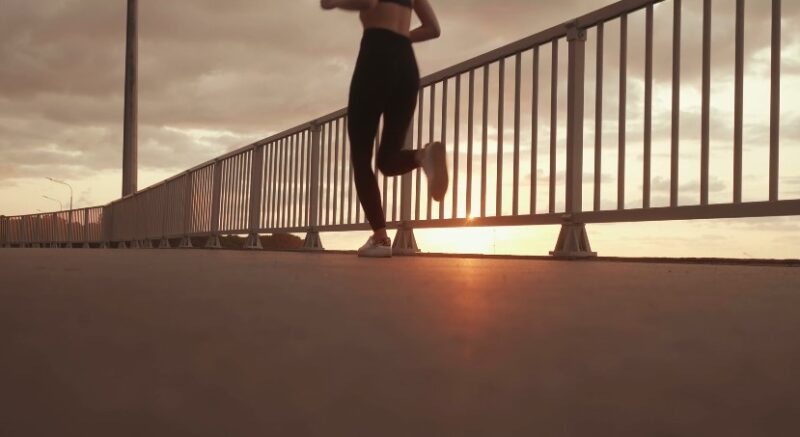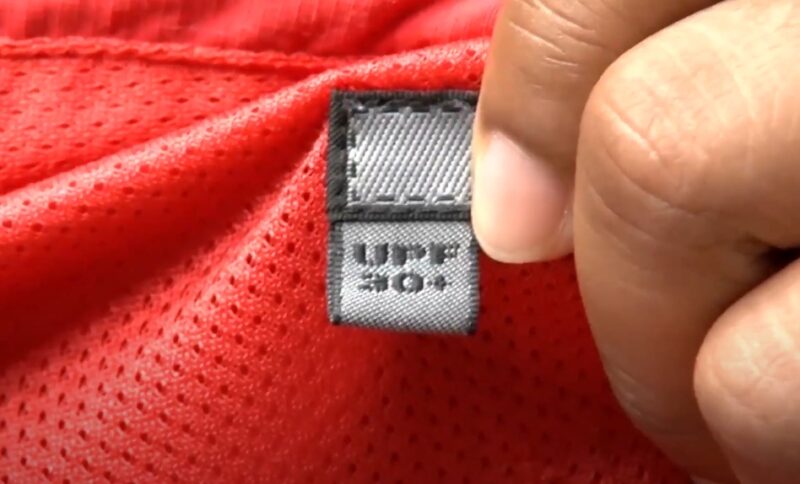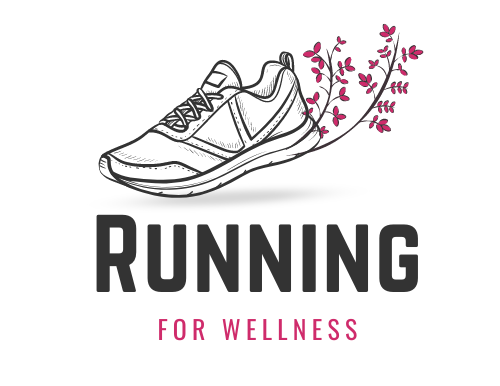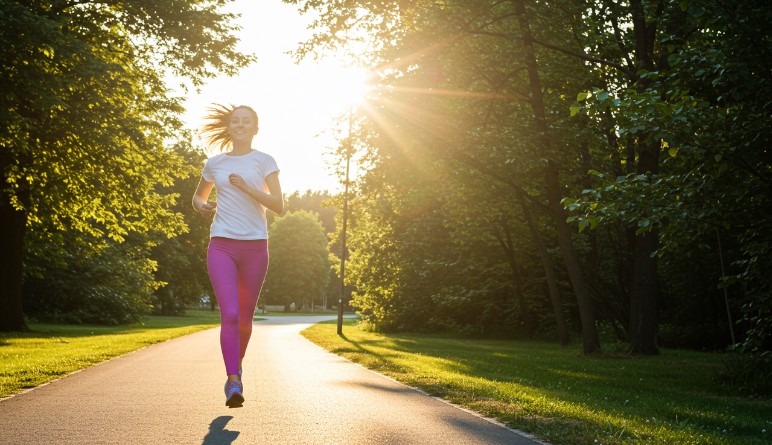If you’re logging miles under the sun every day, you’re probably doing more than just improving your cardiovascular fitness. Sunlight can boost your mood, sharpen your mind, and enhance your athletic performance — but it can also quietly chip away at your skin health, suppress your immune system, and increase your risk for long-term cognitive issues if you’re not careful.
In short: yes, running in the sun every day might be affecting you far more than you realize, both positively and negatively.
Recent research has uncovered strong connections between sunlight exposure and everything from blood pressure regulation to cognitive performance, thanks to mechanisms involving vitamin D, serotonin, nitric oxide, and the circadian rhythm.
But there’s a flip side: frequent, unprotected sun exposure has also been linked to higher rates of skin cancer, premature aging, and sunburn-induced cellular damage, particularly in endurance athletes like runners who train outdoors consistently.
The Physiological Benefits of Sunlight for Runners
Enhanced Cardiovascular and Cognitive Function

Exposure to sunlight triggers several beneficial physiological responses. One well-documented effect is the activation of nitric oxide (NO) in the skin. According to researchers at the University of Edinburgh, sunlight prompts the release of NO into the bloodstream, resulting in vasodilation and a subsequent reduction in blood pressure. This mechanism may contribute to enhanced cardiovascular efficiency during physical exertion, as improved blood flow supports greater oxygen delivery to active muscles.
Further, sunlight is essential for synthesizing vitamin D through skin exposure to ultraviolet B (UVB) radiation. Vitamin D is vital for immune regulation, musculoskeletal health, and inflammatory control. A deficiency in this hormone-like vitamin has been linked to a higher risk of fractures, weakened immunity, depression, and reduced athletic performance.
Sunlight exposure also influences mental health through the regulation of serotonin and melatonin. A large-scale cohort study from the REasons for Geographic And Racial Differences in Stroke (REGARDS) project, which analyzed over 16,000 participants, revealed that individuals with lower sunlight exposure experienced higher rates of cognitive impairment, particularly among those with depressive symptoms. The study suggested a direct correlation between reduced solar radiation (measured in kilojoules per square meter per day) and diminished cognitive performance.
Risks Associated With Frequent Sun Exposure
The Growing Concern of Skin Burns and Photodamage
Despite the benefits, repeated and prolonged sun exposure—especially without appropriate protection—poses significant risks to dermatological health. Endurance runners, in particular, face a higher probability of acute and chronic skin damage due to the cumulative effects of ultraviolet (UV) radiation.
Sunburn, characterized by erythema, inflammation, and, in severe cases, blistering, is an acute manifestation of excessive UV exposure. The condition is not merely superficial; repeated incidents of sunburn significantly increase the risk of developing non-melanoma skin cancers (NMSC) and malignant melanoma.
A study published in the Archives of Dermatology examined the dermatological impact on marathon runners and found that participants had a markedly higher incidence of atypical nevi (moles) and solar lentigines (age spots) compared to non-athletic controls. These findings suggest that long-distance runners may be particularly susceptible to long-term UV-related skin alterations.
The pathophysiology behind this increased risk includes not only greater UV exposure from training outdoors but also a suppressed immune response due to prolonged and intense physical exertion. According to Dr. Elizabeth Hale, a dermatologist and clinical professor at NYU Langone Health, intense endurance activity can temporarily suppress immune function, reducing the skin’s ability to repair UV-induced cellular damage effectively.
Moreover, studies have confirmed that sunburns—especially those incurred during youth or early adulthood—are a significant predictor of melanoma later in life, according to NCBI. Repeated episodes of sunburn may cause cumulative DNA damage in skin cells, leading to mutations in tumor suppressor genes such as p53, and initiating carcinogenesis.
UV Radiation and Accelerated Aging
Ultraviolet rays, particularly UVA, penetrate deeper into the skin and contribute substantially to photoaging, a condition distinct from intrinsic aging. According to findings in Clinical, Cosmetic and Investigational Dermatology, approximately 80% of visible skin aging—wrinkles, sagging, hyperpigmentation—is attributable to chronic sun exposure.
Furthermore, chronic UV exposure has been linked to ocular damage, including an increased risk of cataracts and macular degeneration. Runners often forget to shield their eyes, making sunglasses with 100% UVA/UVB protection a necessary part of safe outdoor training.
Striking the Right Balance
Optimal Sun Exposure for Health and Performance

Despite the outlined risks, moderate and carefully timed exposure to sunlight remains beneficial. The key is not avoidance but controlled, intentional exposure combined with protective strategies. Experts suggest that 10–30 minutes of sun exposure several times per week, preferably in the early morning or late afternoon, can provide sufficient vitamin D synthesis without excessive UV burden. Of course, there is also the risk of running in the heat.
Interestingly, a study presented at the American College of Sports Medicine conference found that cyclists who underwent 20 minutes of UVA exposure performed better in a 10-mile time trial than under non-UV conditions. This performance enhancement was attributed to improved blood flow and muscle efficiency, mediated by sunlight-induced nitric oxide release.
Practical Strategies for Safe Running in the Sun

Runners do not need to sacrifice outdoor training to maintain skin and cognitive health. The following recommendations can help mitigate the risks while retaining the benefits of solar exposure:
1. Schedule Runs During Low UV Index Hours
Avoid midday runs between 10 a.m. and 4 p.m., when UV radiation peaks.
Early morning or early evening sessions are safer and often cooler, aiding performance.
2. Apply Broad-Spectrum Sunscreen
Use SPF 30 or higher, water-resistant sunscreen at least 15 minutes before sun exposure.
Reapply every 80 minutes, especially during longer sessions or after heavy sweating.
3. Wear UV-Protective Gear

Opt for technical apparel with a UPF rating of 30 or higher.
Hats with brims and UV-blocking sunglasses offer essential protection for the face and eyes.
4. Inspect Your Skin Regularly
Perform monthly skin self-examinations, checking for new or changing moles.
Schedule annual dermatological checkups, particularly if you have a history of sunburns or extensive outdoor activity.
5. Support Skin Health Through Nutrition
A diet rich in antioxidants may reduce oxidative damage caused by UV exposure. Include brightly colored fruits and vegetables (e.g., berries, spinach, carrots) for added skin protection.
One such option is pure batana oil, traditionally used for its nourishing and restorative properties.
Rich in fatty acids and antioxidants, it can be applied after outdoor training to help moisturize sun-exposed skin and reduce the impact of environmental stressors.
6. Consider Supplementation When Necessary
In regions with limited sunlight or during winter months, vitamin D supplements (1000–2000 IU/day) may help maintain optimal levels.
Cognitive Effects of Seasonal and Light Variability

Sunlight not only affects physical health but also significantly influences cognitive performance. Seasonal variations in sunlight exposure can modulate the circadian rhythm, which governs sleep-wake cycles and cognitive alertness. Disruption to this rhythm may result in impaired memory, focus, and mood.
The REGARDS study’s data indicated that individuals exposed to lower levels of sunlight over two weeks exhibited significantly greater cognitive decline, especially among those already experiencing depressive symptoms. Importantly, even after adjusting for seasonality, the correlation between insolation (sunlight intensity) and cognitive function persisted, suggesting that consistent exposure, not just the time of year, plays a key role.
Conclusion
Sunlight remains a powerful natural resource with numerous health-promoting effects—from improving vascular function and mood to potentially enhancing endurance performance. For runners, especially those training daily, sunlight can be both a performance ally and a latent hazard.
By implementing basic sun safety measures—timing exposure wisely, using protective clothing and sunscreen, and supporting recovery with proper nutrition and rest—athletes can continue to reap the rewards of outdoor exercise without incurring the long-term dermatological or cognitive costs.
Continued research into the nuanced effects of sun exposure on human health will undoubtedly refine these recommendations. For now, balancing exposure with protection remains the most effective strategy for optimizing both performance and longevity in the sport.
Related Posts:
- Top 400 Hilarious Gym Quotes to Keep You Motivated
- 25 Simple Running Motivation Tips To Get You Moving
- How Long Does It Take to Train for a Half Marathon?
- Half Marathon Training Plan for Beginners - Simple…
- How Far Is a Half Marathon? Everything You Need to Know
- 80 Best Motivational Cross Country Running Quotes 2025







